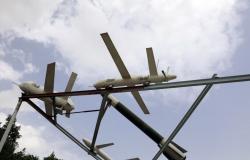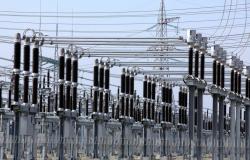
March confirmed the long-term trends that are usually observed in the wholesale electricity market of the Baltic countries after the start of the calendar spring. In Lithuania, Latvia and Estonia, the average price of energy on the Nord Pool exchange settled at 68.21 EUR/MWh and, compared to February, slightly decreased by 9 percent. Early spring weather, extremely efficient generation of solar power plants and malfunctions in the energy infrastructure of the Nordic countries had the greatest impact on electricity prices in the region.
The national holiday is marked by a record
In March, the lowest electricity price on the Nord Pool exchange in the Lithuanian price zone was 0.068 ct/kWh (with VAT), while the highest was 58.45 ct/kWh (with VAT), the monthly average was 8.25 ct/kWh (with VAT ). Compared to February, electricity was slightly cheaper by 9 percent. At that time, the average final price of electricity for consumers who chose an exchange-linked plan (ESO plan “Standard”, rate for one time zone) was about 19.22 ct/kWh (VAT included).
According to Valdemar Fiodorovič, head of the Risk Management and Analytics Department of the independent energy supplier Enefit, wholesale electricity prices in the country were dictated by several key factors.
“First of all, the relatively warm weather allowed us to avoid unexpected cardinal energy consumption jumps, which usually have a negative impact on price changes. Although we had a few cooler spells, they did not have a pronounced effect. In total, 1029 GWh of electricity was consumed nationally in March, compared to 1026 GWh in February, so the average hourly consumption decreased by 6.2 percent.
At the same time, we can be happy that the sun returned with spring and led to a significant increase in the generation of solar power plants. On the holiday of March 11, at 12 o’clock, solar power plants in the country preliminarily produced about 605 MW of green energy – such indicators are usually typical for summer. In total, solar power plants in the country produced 93 GWh of green energy per month,” V. Fiodorovič provides the figure.
If the efficiency of solar power plants increased significantly in March, according to an energy expert, the same cannot be said about wind power plants. In March, the generation from the wind was extremely unstable and did not allow to ensure a stable production. In total, wind power plants generated 301 GWh of electricity during the month, the same as in February. In this case, the situation was somewhat saved by the Latvian hydropower plants, which were still working intensively during the spring floods, supplying surplus green energy to neighboring countries.
According to V. Fiodorovič, a total of 486 GWh of green energy was generated in Lithuania from renewable resources (wind, sun, water) in March, compared to 405 GWh during the same period in February.
The trends are similar in neighboring countries
Electricity prices have settled at a similar level in the neighboring Baltic countries. In Latvia, the wholesale price was 8.25 ct/kWh (with VAT), in Estonia – 8.328 ct/kWh (with VAT).
“The electricity markets of the Baltic countries are very similar, so changes in energy prices are often correlated. In this case, March in the entire Baltic region was mostly dictated by the relatively early spring, which resulted in somewhat reduced overall demand and rising production from renewable energy sources.
Here, Latvia can be singled out again, where the flooded rivers, especially at the beginning of the month, still gave a lot of work to hydropower plants. It’s only February 26. – March 3 In Latvia, the generation of hydroelectric power plants grew by more than 80%, from 93 to 170 GWh, and the resulting surplus of electricity was exported to Lithuania and Estonia”, V. Fiodorovič describes the market trends.
Enefit’s representative points out that another important reason affecting electricity prices was the situation in the Nordic countries. In this case, in Finland, renewable production was at a low level for a large part of the month in March, as well as the prolonged maintenance of the Olkiluoto-3 nuclear reactor, reducing production capacity in the region. In addition to that, the repair of the Estilnk 2 connector has been delayed and according to working forecasts, it will be completed by 2024. the end This will affect not only the final price for those who have exchange plans, but also those who want to lock in.
On the other hand, in Sweden, the important “Forsmark-3” reactor was temporarily being repaired, on March 21, the activity of the “NordBalt” connection was also temporarily restricted, so it was not possible to import cheap Scandinavian electricity to the Baltic countries.
In addition, at the end of March, due to network reconstruction works on the Polish side, it was decided to temporarily disable the LitPol Link connection. Nevertheless, according to V. Fiodorovič, the volume of this connection is not significant and does not have a significant impact on the emerging electricity price in the Baltic countries.
April is the most favorable month for consumers
V. Fiodorovič notes that, in retrospect, April is usually the month when electricity prices are the most favorable for consumers. Such a trend is most influenced by the prevailing optimum air temperature, when the premises are essentially neither heated nor cooled excessively, which reduces the overall energy demand.
“At the same time, the conditions for electricity prices to remain at a low level or even decrease are made by increasingly efficient solar power plants, to which wind farms and regional hydropower plants contribute. Therefore, wholesale electricity prices in April will largely depend on the overall energy demand and the production capacities dictated by natural conditions,” says the Enefit expert.
According to him, those who want to contribute to Lithuania’s energy independence and lower electricity prices can also make their contribution. All you need to do is install your own solar power plant.
“Suppliers usually offer the option of installing a power plant in installments, so it does not even require large initial investments. By the way, in the near future, the state plans to announce another 40 million EUR call for support for the installation of solar power plants, so now is a very good time to make a decision”, recommends V. Fiodorovič.
About Enefit:
Enefit is an international energy company that belongs to the largest group of electricity production and trading companies in the Baltic States – Eesti Energia. Group companies operate in Estonia, Latvia, Lithuania, Poland, Finland. It also operates branches in the United States and Jordan.
in Lithuania since 2007 the group company UAB “Enefit” operates, as well as the largest wind power producer in the Baltic States and Lithuania “Enefit Green”. More than 100 employees currently work in companies operating in Lithuania.
“BNS Press Center” publishes press releases of various organizations. The persons who published them and the organizations they represent are responsible for the content of the messages.
Tags: energy market Baltic countries beginning spring confirmed trend electricity prices remained stable settled EUR mark
-




